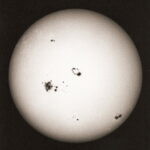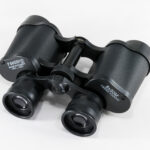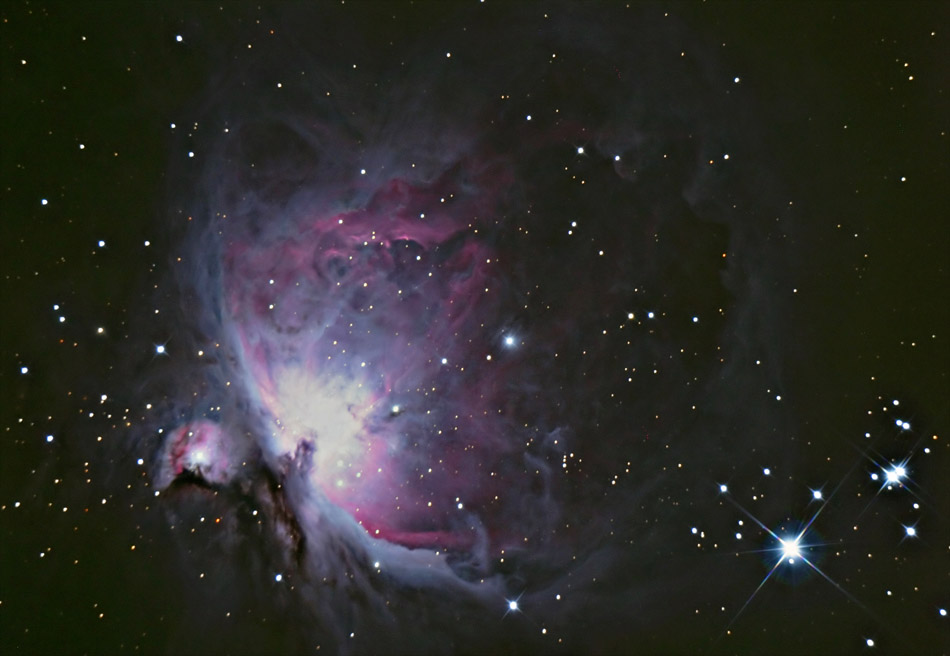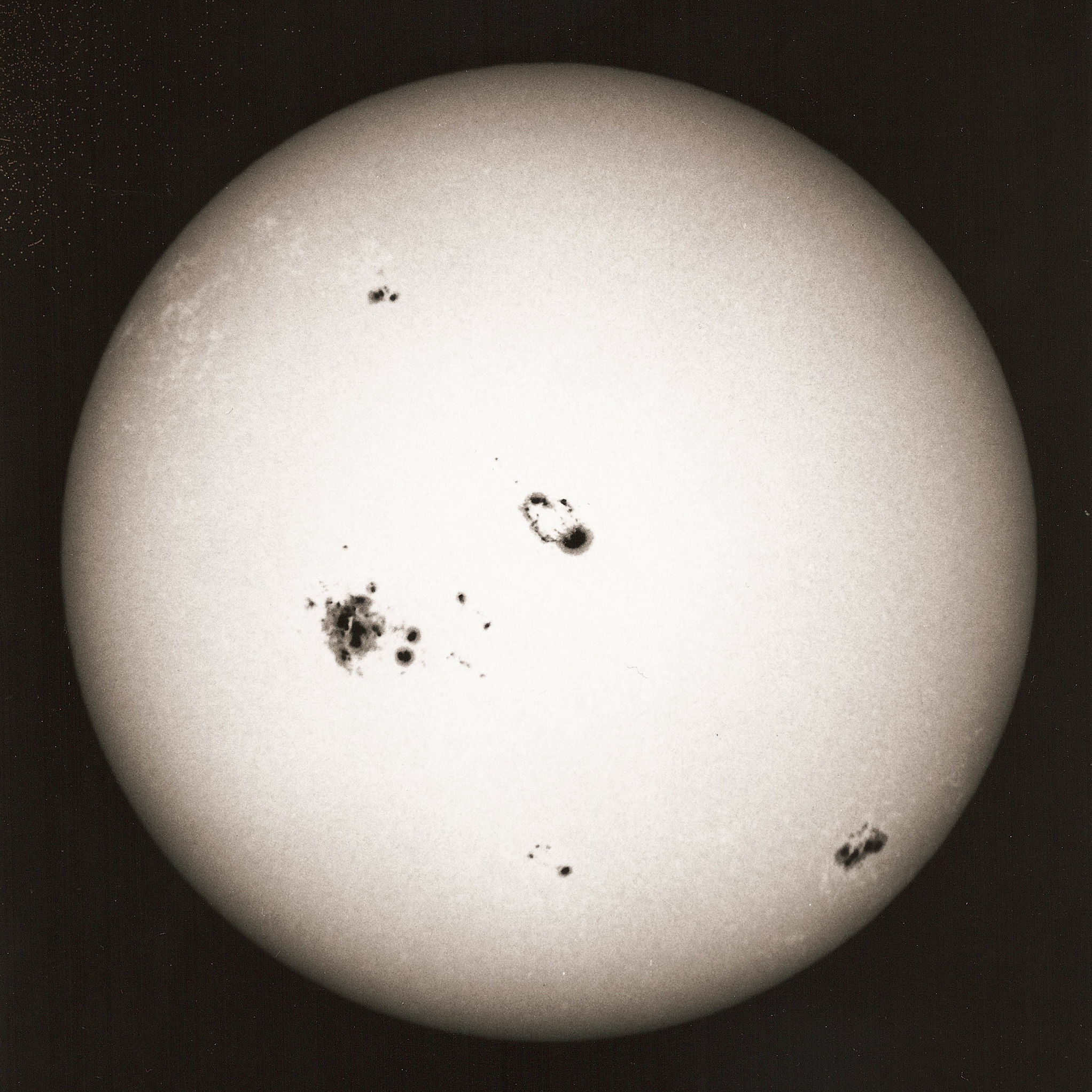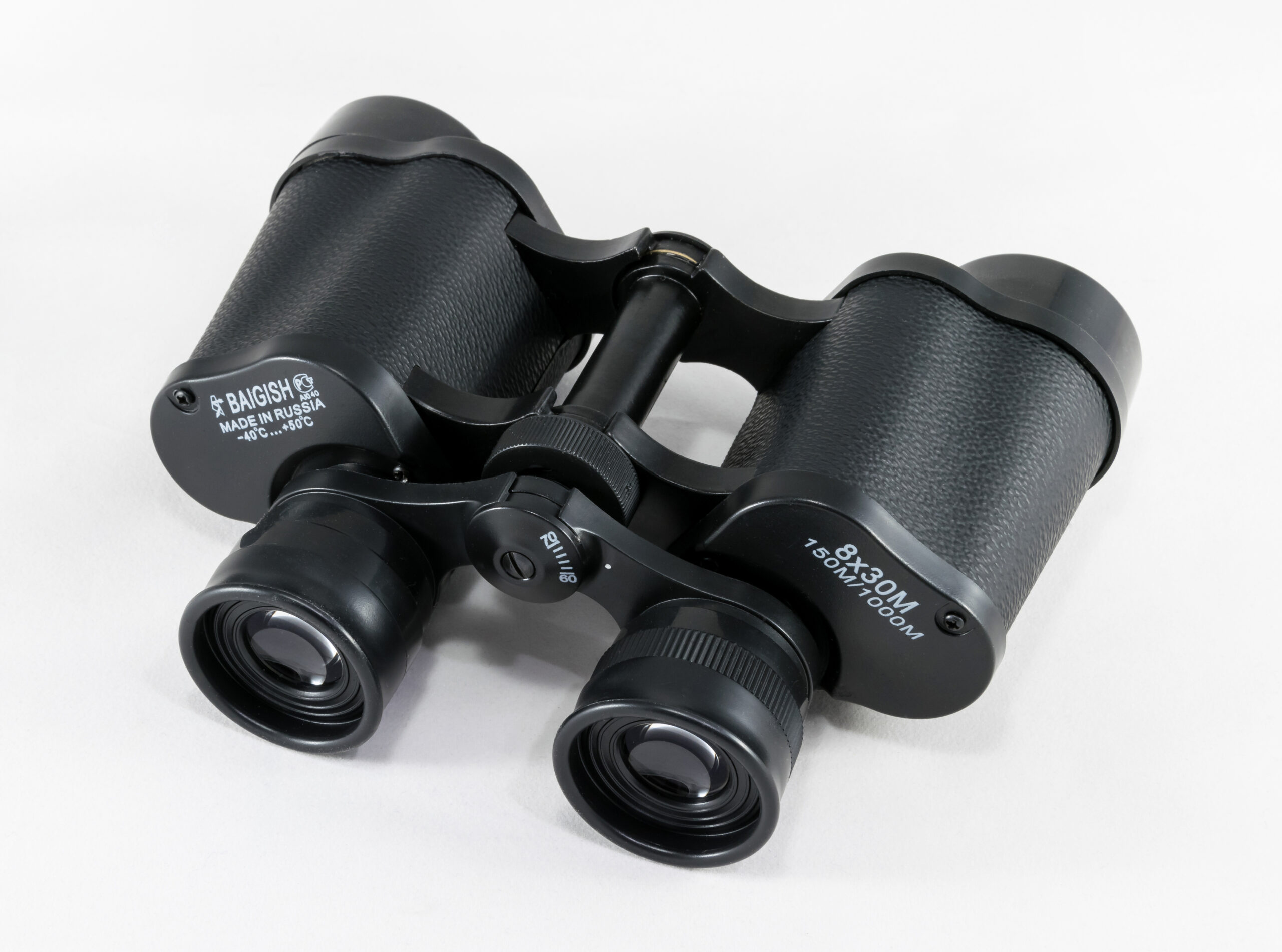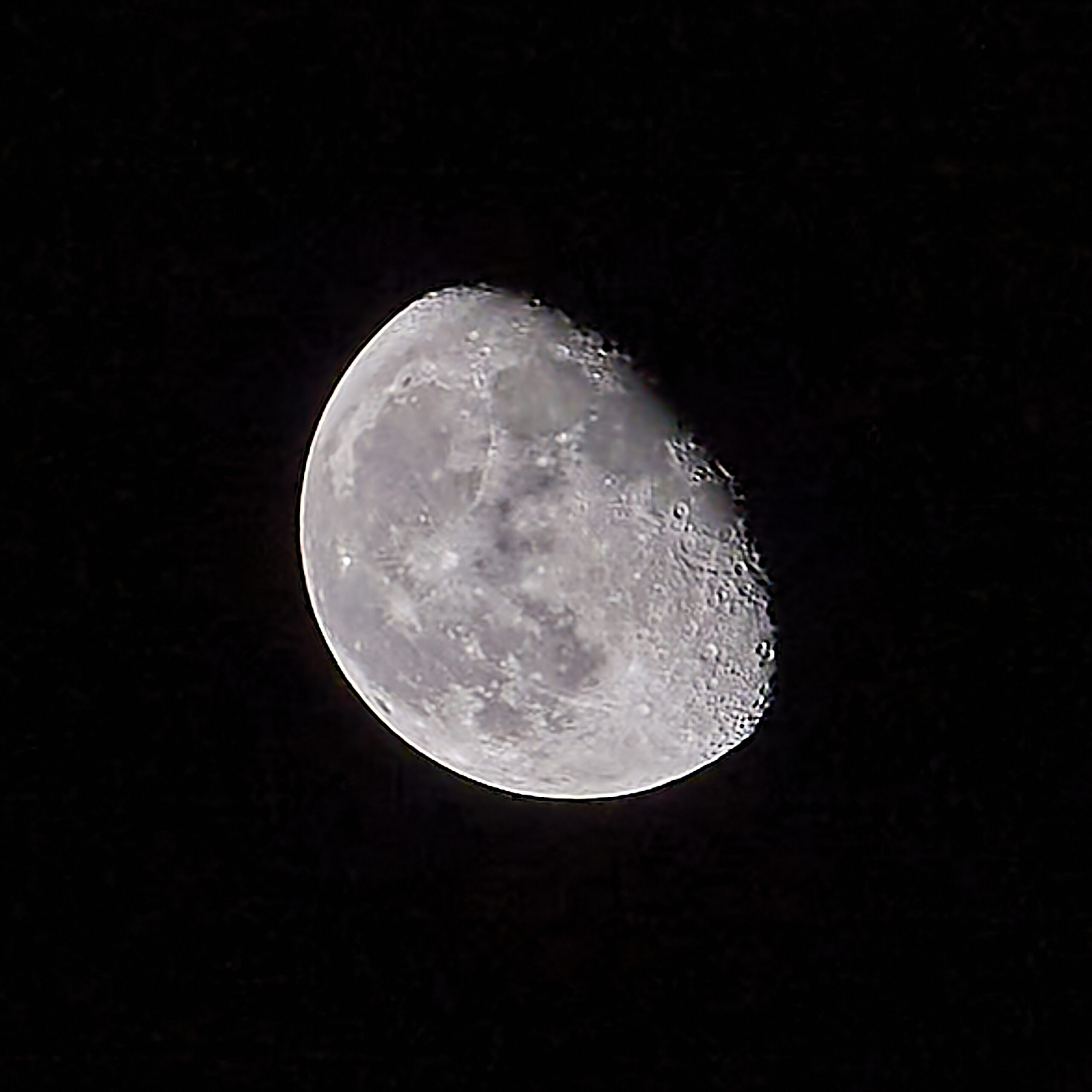A Winter Constellation and the ‘Winter Hexagon’ Asterism
Today, with Exploring The Night Sky we visit one of the most recognizable winter constellations in the night sky, The constellation of Orion.
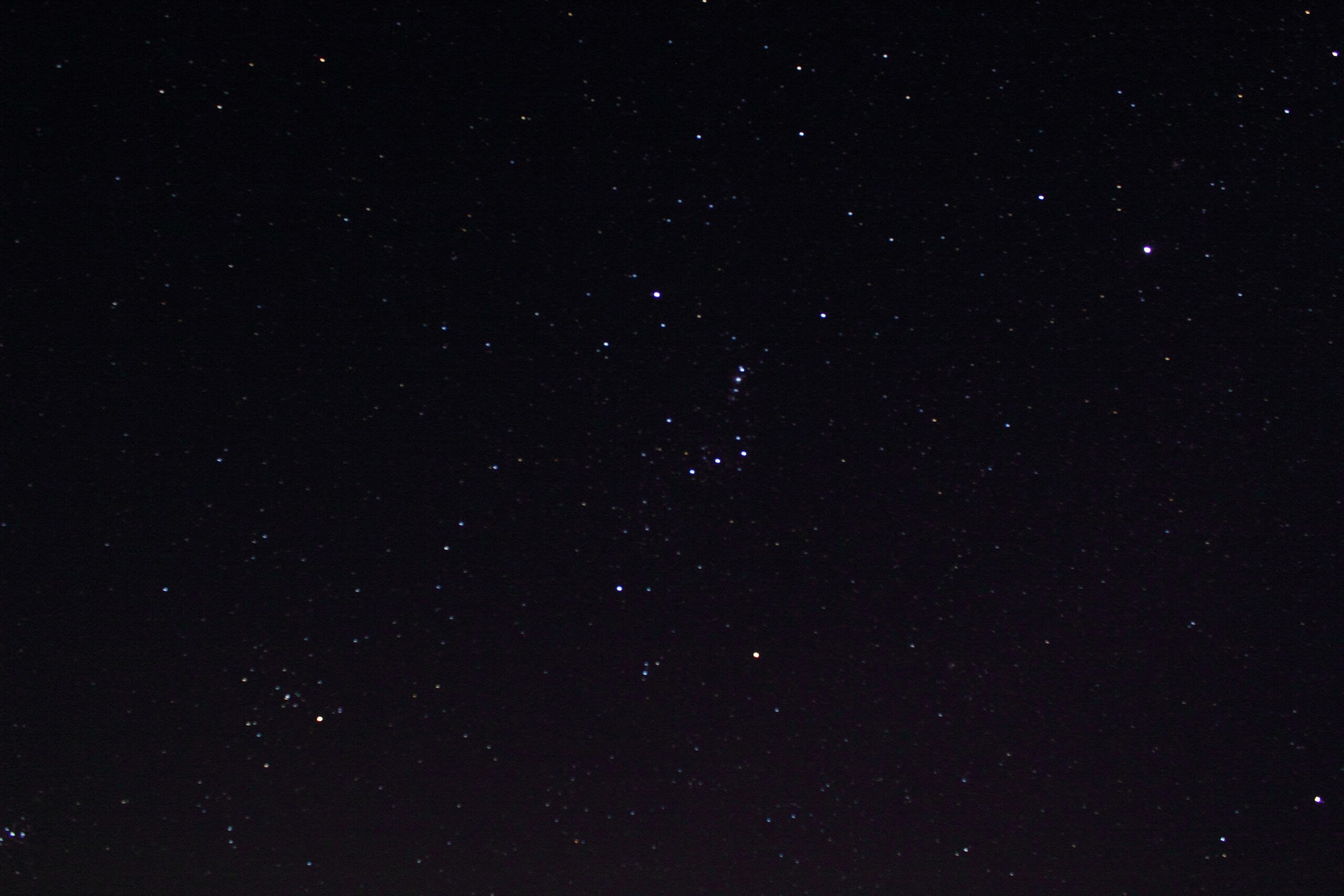
Orion – A Winter Constellation and the ‘Winter Hexagon’ Asterism
Orion (left of centre) as seen on a dark night away from city lights.
Map of Orion showing pointers.
Orion is most prominent during winter evenings in the Northern Hemisphere. Its two brightest stars are Rigel and Betelgeuse which are among the brightest stars in the night sky. These two stars are super giants and slightly variable. There are a further six bright stars, three of which form the famous ‘Orion Belt’. These three stars act as pointers to other constellation and star clusters. Orion also hosts the Orionids, a strong meteor shower, that is associated with Halleys Comet. Orion is also home to one of the brightest nebula in the sky.
So, looking south during the winter months a constellation stands out more than any other around it. This will be Orion. If, you can get yourself to a dark site and acclimatize your eyes you will see a lot more stars. You will notice the three stars in a line is M42 in the middle of the constellation. These three stars will point us to other constellations and other deep sky objects.just below these three stars you may be able to make out a fuzzy object. This object is the ‘Sword of Orion’ or M42 as its astronomical designation. If, you have pair of binoculars this object will appear as a gaseous patch. Some people claim to see the colours of the nebula in binoculars but I have never seen them.
The Winter Hexagon, also known as the Winter Circle, is a prominent winter asterism formed by seven stars prominent in the winter sky. These are Rigel in Orion, Aldebaran in Taurus the bull, Capella in Auriga, Castor and Pollux in Gemini, Procyon in Canis Minor, and Sirius in Canis Major constellations. Some of them we will visit later in this post. Others we will visit at a later date.
Taurus and The Pleiades
Sky Map of Taurus and The Pleiades.
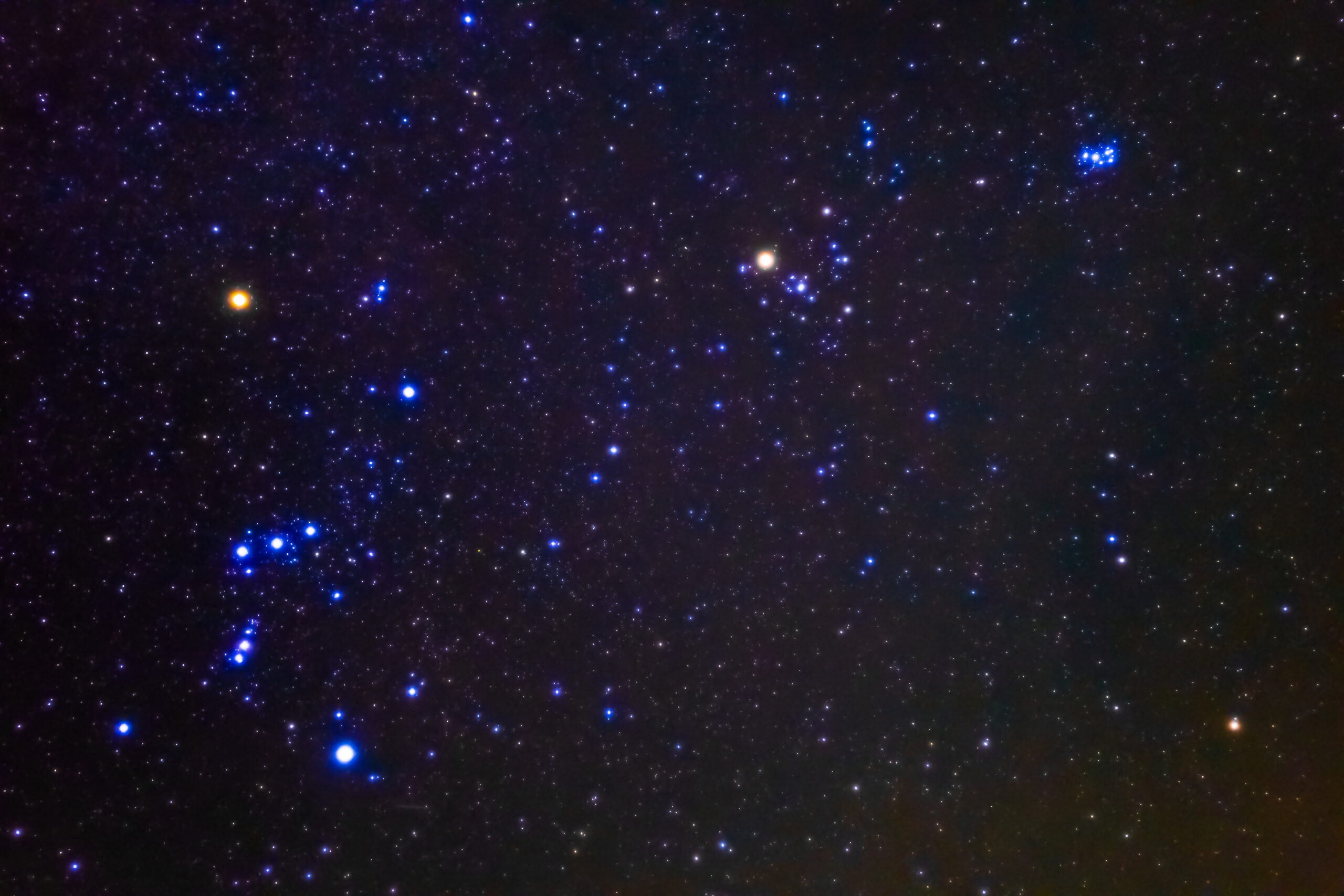
Dark Sky view of Orion (left of center), Taurus and Betelgeuse (Right and top of center) and the Pleiades (top right right).
We shall find our first constellation by using Orion Belt. Locate the three stars of the belt and take a line onward till you come to a bright red/orange star. This is the star Aldebaran, part of the ‘Winter Hexagon’. It is also the brightest star in the constellation of Taurus the bull and is sometimes called the ‘Eye of the Bull’. Taurus is one of the twelve signs of the Zodiac. If, you are in a dark site then you may be able to make out some fainter stars around Aldebaran. This cluster is called the Hyades. Looking through a pair of binoculars will show many more stars. These stars are a loose cluster of stars moving together around the galaxy. They started out as a tighter cluster of stars but as they circled around the galaxy gravity from passing stars have slowly pulled them apart. They will eventually part company from each other and make their own individual motion around the galaxy. Aldebaran is not part of the Hyades it just happens to be in line of sight as it is much closer to the Earth.
If we continue our line from Orion Belt, past Aldebaran we come to a sprinkling of stars close together. This another cluster of stars and is one of the most famous. They are known by many as the ‘Seven Sisters’ or ‘The Pleiades’. People with reasonable eyesight can count more than seven stars. Binoculars will show many hundreds more.
The Pleiades are a young star cluster and photographs show the stars still wrapped in their gaseous birth place.
Sirius The Dog Star
We again find Orion’s belt and follow it south till we come to a very bright star. This star is called Sirius and is the brightest star in the night sky. The Brightest star does not mean it’s the brightest of all stars, instead it happens appear the brightest because it’s closer and bigger. It is only eight and a half light years away.
Also, known as the Dog Star, Sirius is twice as bright as the second brightest star in the night sky, Canopus in the constellation Carina, which is the brightest star in the southern hemisphere.

Sky Map of the Constellation Canis Major showing Sirius the ‘Dog Star’.
Sirius is situated in the constellation Canis Major also known as the Great Dog. Along with Canis Minor, the Small Dog both constellations form the dogs that belong to Orion the Hunter in Greek mythology.
There are a number of deep sky objects situated in Canis Major and Canis Minor, but all need a telescope to see them well.

Dark Sky view of Orion (middle right), Taurus (far right), Sirius (bottom centre).
Gemini The Twins
Sky map of Gemini

Dark Sky view of Gemini taken with DSLR wide field camera.
For our final look at Orion and it’s pointers we go back to Orion and take a line from Rigel in the bottom right, through the constellation to the bright orange star Betelgeuse in the top left, or shoulder of Orion. Continue this line until you come to two bright stars. This is the constellation Gemini one of the twelve constellations of the Zodiac. The two stars are the brightest in Gemini and are named Castor and Pollux who are the Twins from Greek Mythology.
Gemini does not hold any bright cluster but in a small telescope there are a number of objects visible that are well worth visiting. As this post is part of a number that is opening up the night sky for beginners I will deal with those at a later date.
Conclusion
We have now finished our brief tour of Orion and its neighboring constellation. Orion itself has many wonders for those with binoculars, some of these may be just visible to those with good eyesight from very dark locations.
One thing that has started to appear in our journey is that a lot of constellations are associated with Greek Mythology. Reading the stories from associated with the constellations are fascinating and also a good read on cloudy nights. I certainly recommend having a read of these.
Clear Skies
Dave Anscombe
